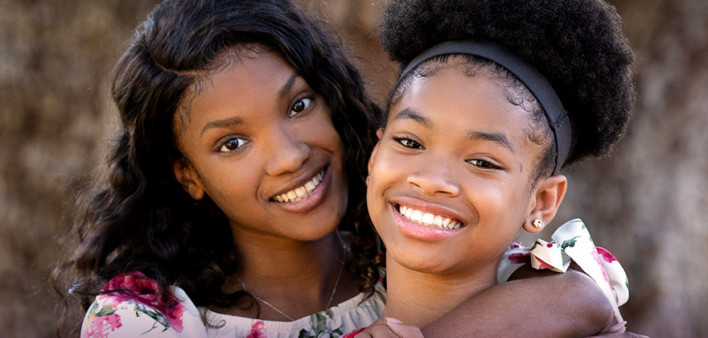Thursday, March 10, marks National Women and Girls HIV/AIDS Awareness Day (NWGHAAD), a time to highlight and support HIV testing, treatment and prevention efforts among women and girls. The theme for NWGHAAD 2022 is “Prevention and Testing at Every Age. Care and Treatment at Every Stage.”
Women of color and transgender women experience disproportionately high rates of transmission and low rates of testing. Let’s use this National Women and Girls HIV/AIDS Awareness Day coming up (March 10) to help stop the cycle.https://t.co/qE5p0oU2rE #NWGHAAD #NWGHAAD2022 pic.twitter.com/oV54Wa7fp6
— Amida Care (@AmidaCareNY) March 4, 2022
NWGHAAD is led by the Office on Women’s Health, which is part of the Department of Health and Human Services. For this year’s 17th annual observation, the Office of Women’s Health writes:
We continue to make progress toward eliminating HIV and AIDS in the U.S., but women continue to remain vulnerable to infection—especially Black or African-American and Hispanic women. Black women accounted for the largest share of new HIV diagnoses among women in the U.S. in 2018. Poverty, stigma, medical mistrust and fear of discrimination remain factors that prevent some women from getting tested, seeking care or reaching out for support.
An estimated 14% of transgender women have HIV. According to the new National HIV/AIDS Strategy, an estimated 44% of Black transgender women, 26% of Latina transgender women and 7% of White transgender women have HIV. Transgender women experience stigma and discrimination and often encounter health care providers or clinics lacking knowledge of transgender issues or proper inclusive language. These all pose obstacles to HIV testing, prevention and care that can be addressed among transgender women.
Collectively, we can work to eliminate these statistics.
In 2018, about 1,173,900 people (nearly 1.2 million) were estimated to be living with HIV in the United States; of those, 261,800 were women, according to a fact sheet from the Centers for Disease Control and Prevention (CDC). More specifically, there were 37,968 new HIV cases nationwide in 2018, of which 19% (7,190) were women.
View this post on Instagram
The HIV and Women section of the POZ Basics on HIV/AIDS provides further context to the data:
Women in the United States have lower HIV rates than gay and bisexual men, but a substantial number are at risk—and that risk varies widely by race/ethnicity and geography.
Making up about half of the U.S. population, women accounted for about 1 in 5 new HIV diagnoses in 2019, or approximately 7,000 cases. HIV incidence among women declined slightly in recent years. Women make up nearly a quarter of all people living with HIV in the United States, but this rises to about half worldwide.
Black women are disproportionately affected by HIV, accounting for nearly 60% of new diagnoses. White women and Latina women each account for around 20% of new cases. The CDC projects than 1 in 309 Black women and 1 in 287 Latina women will acquire HIV in their lifetime compared with 1 in 874 white women. This means Black women are nearly three times more likely than white women ever to be diagnosed with HIV. But Black women have seen a decline in HIV incidence in recent years, while white women have seen an increase.
Women ages 25 to 34 are most likely to be diagnosed with HIV—a bit older than the average age for men. While women in areas such as the Bronx and Washington, DC, are more likely to be living with HIV, new cases are increasingly shifting to the South. Nearly half of women diagnosed with HIV live in areas with high poverty.
Most cisgender women living with HIV were exposed through heterosexual contact (85%), followed by injection drug use (15%). Transgender women are at greater risk for HIV than cisgender women: While they make up less than 1% of the U.S. population, they account for an estimated 2% of new HIV diagnoses.
View this post on Instagram
In describing the prevention challenges facing women, the CDC writes that social barriers such as racism, discrimination and HIV stigma have a major impact on health and well-being. What’s more, “because some women may be unaware of their male partner’s risk factors for HIV (such as injection drug use or having sex with men), they may not use a condom or medicine to prevent HIV,” notes the CDC, adding that “women who don’t know they have HIV can’t get the medicine they need to stay healthy and prevent transmitting HIV to their partners. Therefore, they may pass HIV to others without knowing it.” Other prevention challenges include intimate partner violence, mental health, sexual behaviors, sexually transmitted infections (STIs) and a lack of knowledge about pre-exposure prophylaxis (PrEP) pills or injections that can prevent an HIV-negative person from acquiring HIV.
The CDC awareness day page offers graphics and videos you can download in English and Spanish, along with text of sample posts you can share to promote awareness, testing and prevention among women and girls.
View this post on Instagram
To learn more about other HIV awareness days, including a calendar you can download and print, visit “2022 HIV/AIDS Awareness Days.”
For a collection of related HIV articles, click #Women, where you’ll find articles such as “Given a Choice, Young Women Prefer Vaginal Ring for PrEP,” “HIV and Bone Loss at Menopause Go Hand in Hand,” “Kia LaBeija, Artist and HIV Activist, Is Prepared for Her First Solo Show” and “Ending HIV Criminalization Starts With Me,” which explores how HIV criminalization laws target women—and how women are fighting back.







Comments
Comments